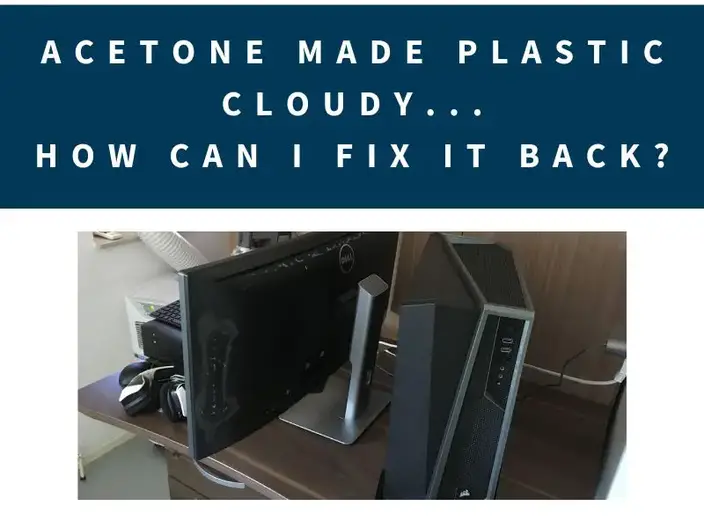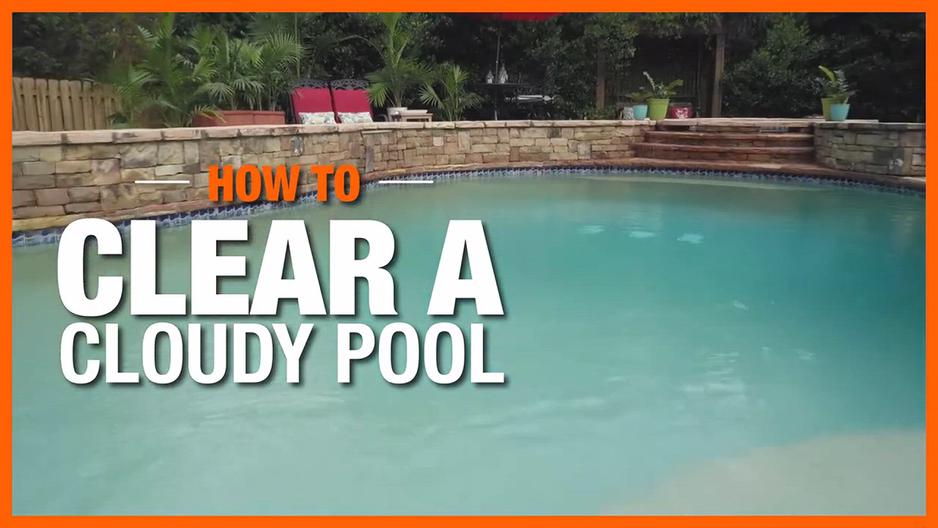Acetone Made Plastic Cloudy; How Can I Fix it Back?
Acetone is a solvent that reacts with plastic to dissolve the plastic particles. So one of the general rules about acetone is not to use it on plastic. When you use acetone to clean plastic material, it dissolves the outer layer of the plastic and makes it look cloudy.
So, to recover a plastic surface that has been made cloudy by using acetone, first use a fine to medium-coarse emery paper to rub down the affected area before moving on to finer grades and finishing with the finest (smallest particle size).
The surface must then be polished with metal polish (aqueous only) or a substitute like jeweler’s rouge until it turns glossy. A wax-based polish can be used to remove any remaining haze (aqueous only).

Table of Contents
- How does acetone act on plastic?
- How to remove acetone stains from a laptop?
- How to remove acetone stains from countertops?
- How to wash acetone off your hands?
- How to reverse acetone damage to wood?
- Some related FAQs.

How does acetone act on plastic?
Acetone reacts with plastic, making the surface soft, smooth and even dissolved. But there are some kinds of plastic that do not react with acetone and withstand no damage when acetone is applied.
So when you are going to apply acetone on plastic, then make sure you know how the type of plastic is going to react with acetone. If not, the rubbed surface will be unrecoverably damaged.
What kind of plastic cannot resist acetone?
You must never use acetone on the following types of plastics. But the drawback is you just cannot identify what type of plastic it is by just looking at it.
You may have to search on the web, ask for the manufacturer, or read the user manuals of your devices and objects to check the type of plastic that they are made of.

- PVDF
- Polycarbonate
- Polysulfone
- Cast Acrylic
- PVC
- CPVC
What plastics can withstand acetone?
- FEP
- ETFE
- PCTFE
- PFA
- PEEK
- ECTFE
- Polypropylene
The above types of plastic are rated “good” against acetone. So you can use any concentration of acetone on those types of plastics for cleaning and other purposes.

How to remove acetone stains from a laptop?
Sadly, you cannot remove acetone stains from a laptop. You can try covering the acetone stains using a sticker or something similar.
So, as you cannot undo the damage caused by acetone, the best thing you can do is avoid using those types of solvents on your laptop or desktop computers.
How to remove acetone stains from countertops?
You can try to remove the acetone stains from countertops by using the following metod. But as I’ve mentioned above, acetone burns and dissolves some plastic surfaces, it will be very hard to recover those surfaces back to normal.
- With a dry, white, absorbent cloth, blot the liquid. Use a rounded spoon to gently scrape up semi-solids. Solids should be broken up and completely removed using a vacuum.
- 1 cup of warm water and 1/4 teaspoon of dishwashing liquid should be combined. A stronger solution shouldn’t be used because it might leave a soap film behind.
- Avoid using laundry detergent because it might contain bleach, which could harm or stain the surface you’re cleaning.
- With a white washcloth, dab some dishwashing liquid on the acetone residue and gently work your way toward the center of the spill for a few minutes. Never rub. Continue until all traces of the spill are gone.
- As long as the acetone solution is absorbed, blot the liquid with another white cloth.
- Repeat the procedure as necessary until all traces of the acetone solution have been eliminated.
- Once the spill has been completely cleaned up, thoroughly rinse the area with cold water to get rid of any detergent residue.
- To get rid of all moisture, blot with a dry towel. Until the area is completely dry, make sure no one walks on it.

How to wash acetone off your hands?
Simply, acetone is completely soluble in water. So when you need to wash acetone off your hands, wash them with water well. For added safety, wash your hands with soap.

Is acetone toxic?
Acetone enters your bloodstream after exposure, where it travels to all of the body’s organs. Your liver converts it into harmless chemicals when there is only a small amount.
High concentrations of acetone inhaled or ingested over a brief period of time can result in unconsciousness (passing out), coma, racing heart, headaches, confusion, nausea, and racing pulse.
Acetone can irritate the nose, throat, lungs, and eyes when breathed in moderate to high concentrations. Your skin may become dry, irritated, and cracked after coming into contact with acetone.
How to reverse acetone damage to wood?

You cannot reverse the damages caused by acetone. But you can try to repair it by using the following steps. So take a breath and start repairing.
- Use an all-purpose cleaner on the stained area and use a rag to wipe it dry. Move the item to a room with good ventilation, or place a drop cloth on the floor beneath the wood.
- Color the area with a wood stain pen and let it dry if the damage is minor. Apply a thin layer of spray lacquer over the stain if it only affects the lacquer. Follow the instructions on the packaging to let it dry. If more coats are required, apply them very thinly until the sheen is the same as the surrounding wood.
- If the damage needs more extensive repair, use a piece of fine grit sandpaper to sand the entire panel where the stain first appeared until you reach bare wood.
- If the stain is thick, you want to refinish the entire piece of wood, or you want to change the finish’s color, use an electric sander. If you can precisely match the stain color, sand only the damaged area.
- Remove all wood sawdust with a vacuum. Using a paint brush or rag, stain the wood’s entire surface. As instructed on the packaging, let the piece dry. After the first coat has dried, apply a second.
- Over the stain, apply a layer of clear lacquer, and let it dry as directed by the package. After the first coat is dry, apply a second.


Black Stuff Under Carpet Pad; All You Need to Know.
finanzenrechnen.de

Some related FAQs.
Can acetone melt PVC?
Yes, PVC reacts with acetone, and therefore acetone can dissolve PVC when high concentrations of acetone are added to the surface of PVC.
Does acetone eat glass?
Glass is a very stable and lazy substance that does not react with many solvents. So you can simply and securely use acetone on glass surfaces, even highly concentrated acetone.

Can I mix acetone with water?
Acetone completely dissolves in water when combined with it. Acetone is typically the solute and water is the solvent in this kind of reaction.
A homogeneous solution is produced when these two compounds are combined due to the hydrogen bonding that occurs.

Hi, I’m Anna Jeffery, an experienced author and cleaning expert. I strive to share my knowledge with everyone by writing useful guides and tips to keep their living and working spaces clean and healthy. I believe everyone deserves to live in a clean and organized environment, and I take pride in knowing that my articles are helping people achieve that goal. Stay tuned for practical and useful cleaning tips!











